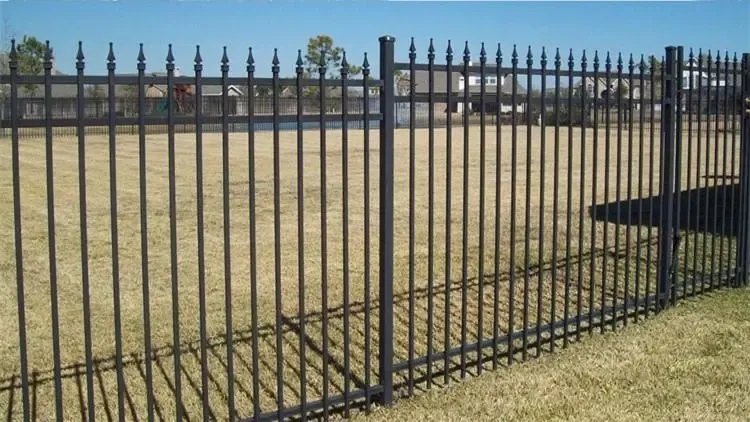Aug . 19, 2024 05:24 Back to list
Top Quality Roll Welded Wire Mesh Supplier and Manufacturer for Various Applications
Understanding Roll Welded Wire Mesh A Comprehensive Overview
Roll welded wire mesh is a highly versatile product used in various industries for a multitude of applications. This type of wire mesh is manufactured through an extensive process that involves welding transverse wires to longitudinal wires, resulting in a robust and durable product. The manufacturing of roll welded wire mesh has gained prominence due to its cost-effectiveness, strength, and adaptability.
Manufacturing Process
The manufacturing process of roll welded wire mesh begins with the careful selection of high-quality wire materials, typically made from low carbon steel or stainless steel. These materials are chosen for their structural integrity and resistance to corrosion. The wire is then straightened and cut to the required lengths.
The welding process is crucial in the production of roll welded wire mesh. Using an automated welding machine, the transverse wires are meticulously welded at intersecting points with the longitudinal wires. This creates a grid-like structure that reduces the risk of deformation and increases overall strength. The mesh is then cooled and can undergo additional treatments such as galvanization to enhance its corrosion resistance.
Once the welding process is complete, the mesh is rolled into coils for easy handling and transportation. This rolling feature is one of the key benefits of roll welded wire mesh, as it allows for convenient storage and installation on a job site.
Applications of Roll Welded Wire Mesh
Roll welded wire mesh has a diverse range of applications across various sectors, including construction, agriculture, and manufacturing. In the construction industry, it is commonly used for reinforcing concrete, forming fences, and creating barriers for construction sites. Its strong structure provides the necessary support for building foundations, ensuring durability and longevity.
roll welded wire mesh manufacturer

In agriculture, roll welded wire mesh serves as an effective fencing solution to keep livestock contained and protect crops from wildlife. Its sturdy construction prevents animals from breaking through, making it a reliable choice for farmers. Additionally, it can be used for the creation of trellises and supports for climbing plants, enhancing agricultural productivity.
Manufacturing industries also utilize roll welded wire mesh in the production of shelving units, cages, and partitions. It provides the perfect balance of visibility and security, allowing for efficient storage and organization within warehouses and factories. The mesh can also be customized to different sizes and specifications, making it suitable for various operational needs.
Advantages of Roll Welded Wire Mesh
The popularity of roll welded wire mesh can be attributed to its many advantages. First and foremost, its strength-to-weight ratio makes it an ideal choice for structural applications. Additionally, the welding process ensures that the mesh maintains its shape under load, reducing the likelihood of bending or breaking.
Another significant advantage is its cost-effectiveness. Roll welded wire mesh is competitively priced, making it an economical option for businesses looking to minimize costs without sacrificing quality. The ability to produce the mesh in rolls also means that installation can be done quickly, saving both time and labor costs.
Lastly, roll welded wire mesh is environmentally friendly, especially when made from recyclable materials. By choosing this type of mesh, businesses can contribute to sustainable practices while still enjoying the benefits of a high-quality product.
Conclusion
In conclusion, roll welded wire mesh manufactured from high-quality materials offers a strong, cost-effective, and versatile solution for various applications. Its unique manufacturing process ensures durability and adaptability, making it a reliable choice for industries ranging from construction to agriculture. As demand for sustainable and efficient materials continues to rise, roll welded wire mesh stands out as a valuable product in the global market, meeting the needs of businesses and consumers alike.
-
High-Quality Steel Grating Solutions for Industrial Applications | Durable, Safety, Customization
NewsJul.13,2025
-
Advanced Solutions-CompanyX|Enterprise Efficiency&Cost Reduction
NewsJul.13,2025
-
Sustainable Manufacturing-EcoTech Innovations|Waste-to-Energy System&Zero Emissions
NewsJul.13,2025
-
Welded Wire Mesh- Buildings Wiremesh Co., Ltd.|Durable Construction Material&Industrial Strength Solution
NewsJul.13,2025
-
Smart Production Solutions-Example Corp|AI Automation&IoT Monitoring
NewsJul.13,2025
-
Advanced Industrial Solutions-Advanced Industrial Solutions|Manufacturing Efficiency&Productivity
NewsJul.13,2025

